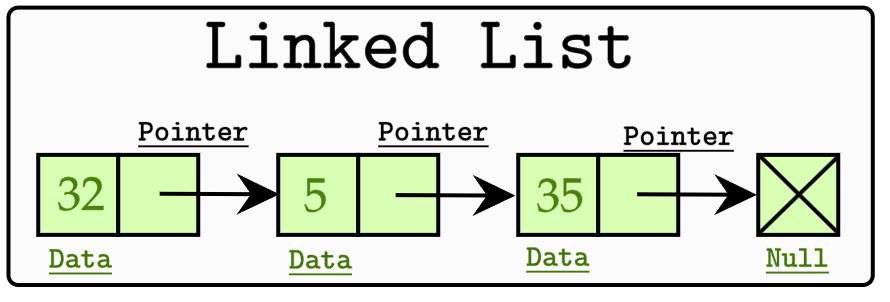Linked list
A linked list is a sequence of nodes that contain two fields: data (an integer value here as an example) and a link to the next node. The last node is linked to a terminator used to signify the end of the list. [1]

Implementation in C++
Create a Node class where each data (integer data) and pointer can be stored:
struct Node {
int data; // Where data is stored
struct Node* next; // Where the pointer to the next node is stored
};
And then add the capacity for the node to create a new one regardless of how many there are.
// Each node in a linked list is a structure. The head node is the first node in the list.
Node* addNodeToTail(Node* head, int value) {
// declare Node pointer and initialize to point to the new Node (i.e., it will have the new Node's memory address) being added to the end of the list.
Node *temp = malloc(sizeof *temp); /// 'malloc' in stdlib.
temp->value = value; // Add data to the value field of the new Node.
temp->next = NULL; // initialize invalid links to nil.
if (head == NULL) {
head = temp; // If the linked list is empty (i.e., the head node pointer is a null pointer), then have the head node pointer point to the new Node.
}
else {
Node *p = head; // Assign the head node pointer to the Node pointer 'p'.
while (p->next != NULL) {
p = p->next; // Traverse the list until p is the last Node. The last Node always points to NULL.
}
p->next = temp; // Make the previously last Node point to the new Node.
}
return head; // Return the head node pointer.
}